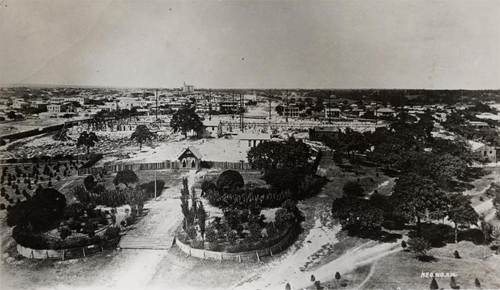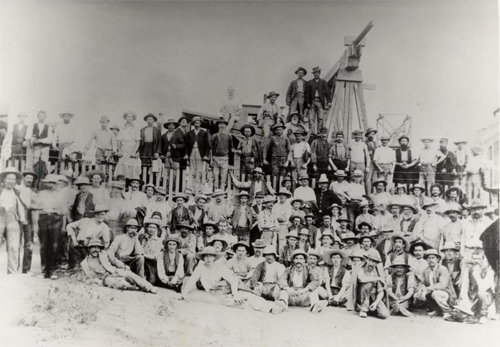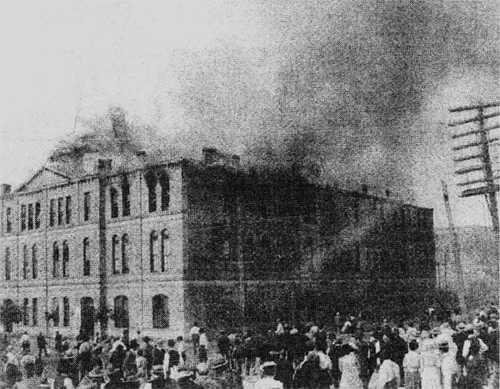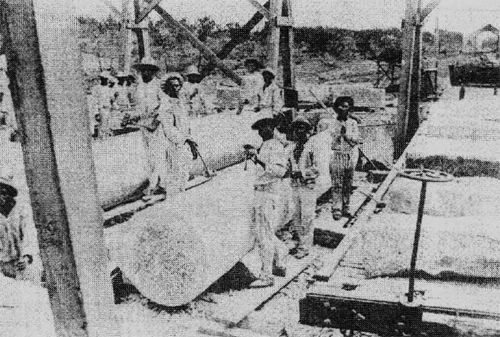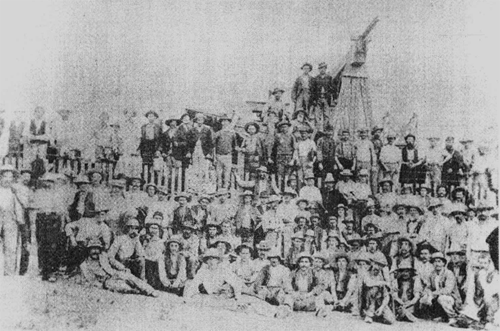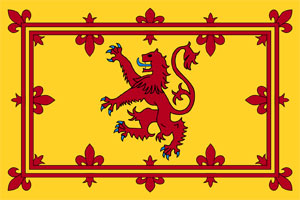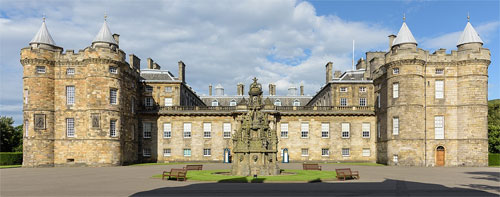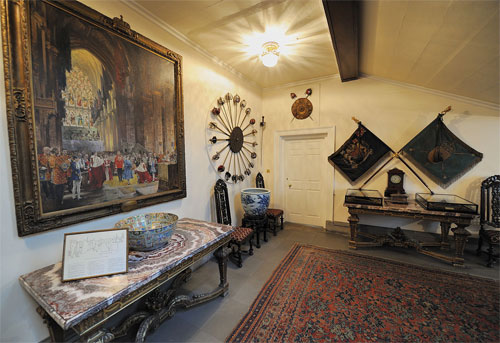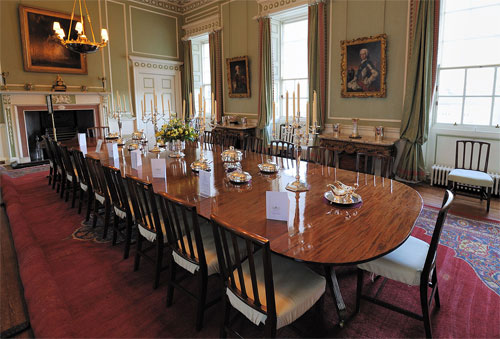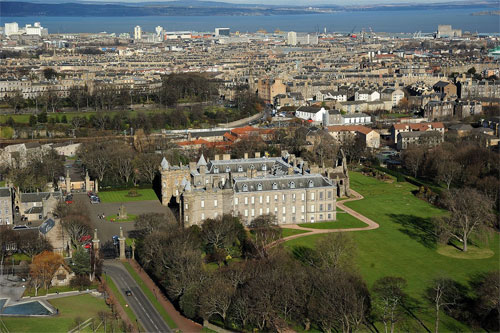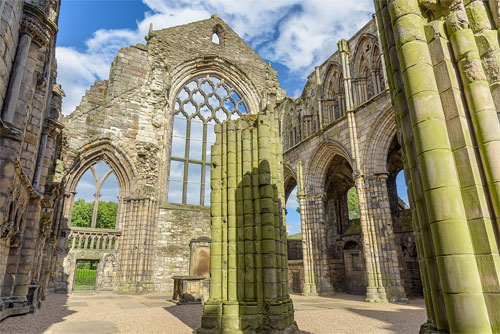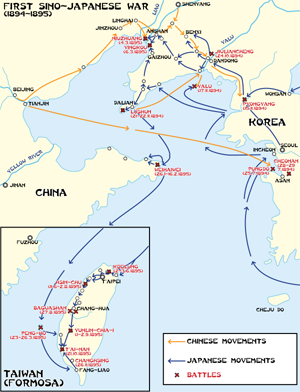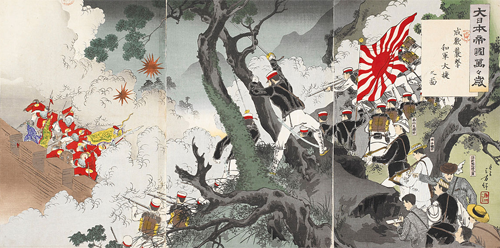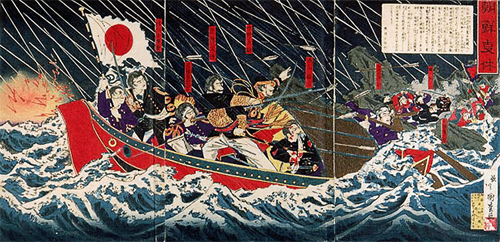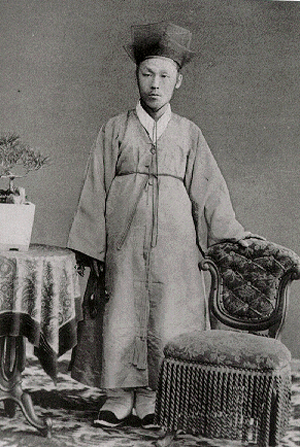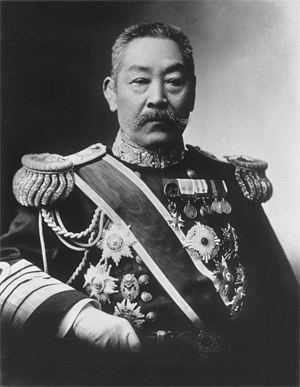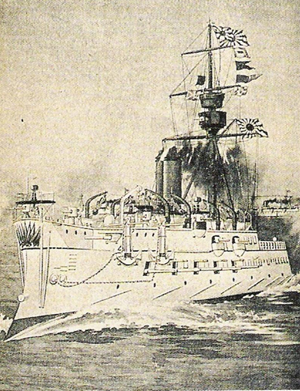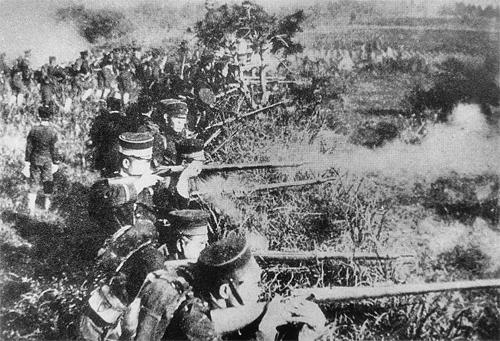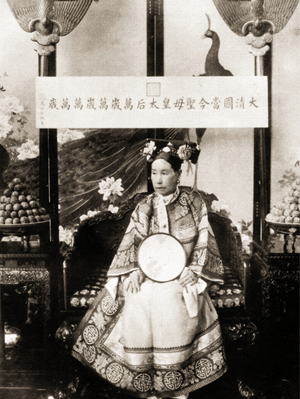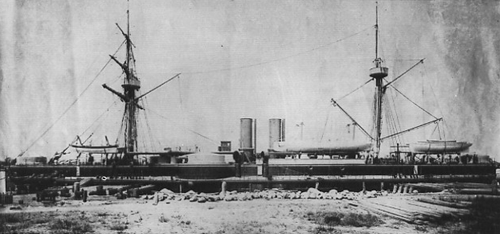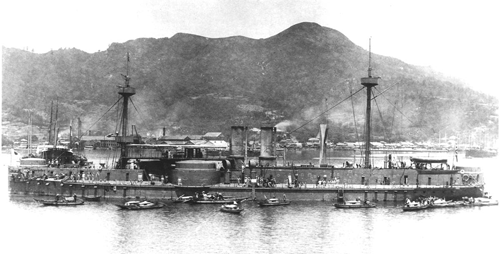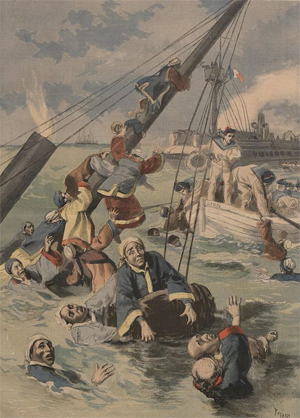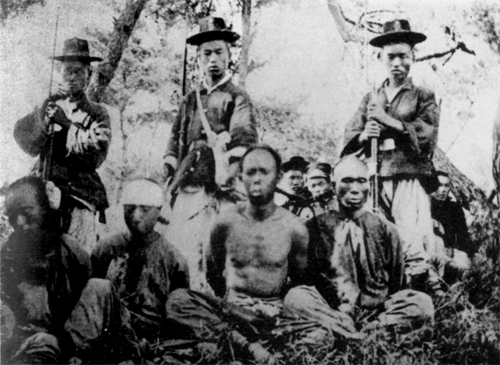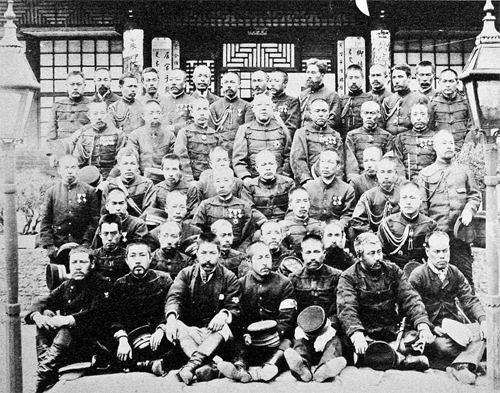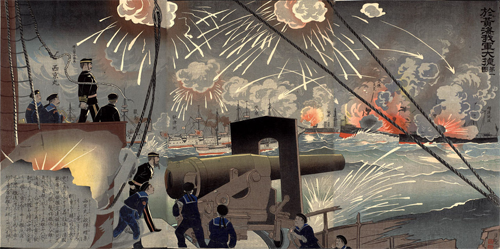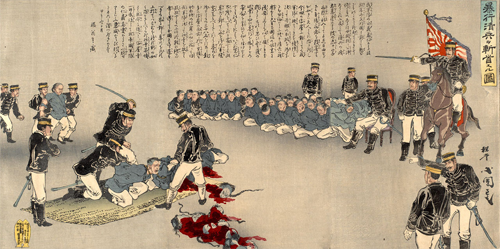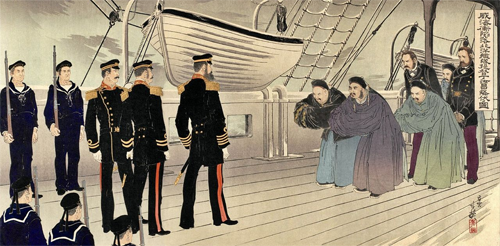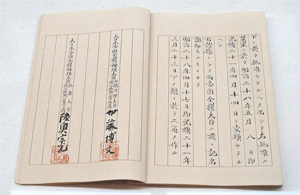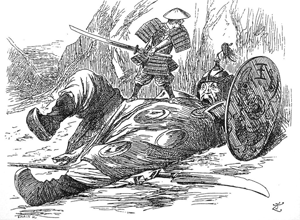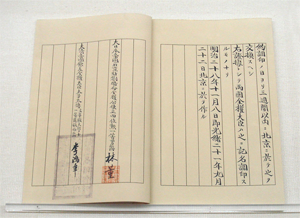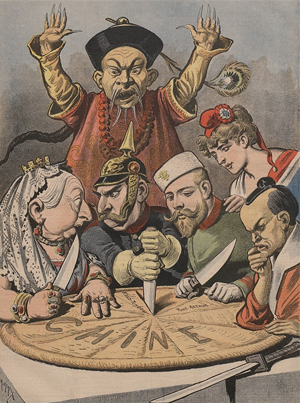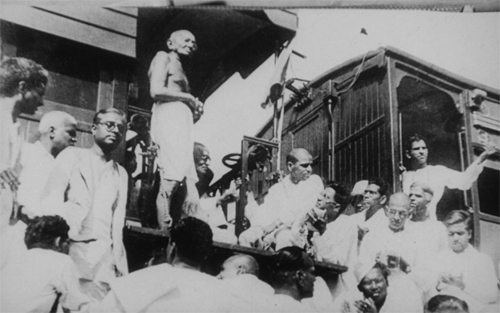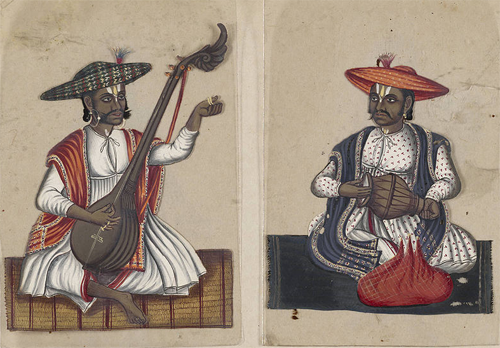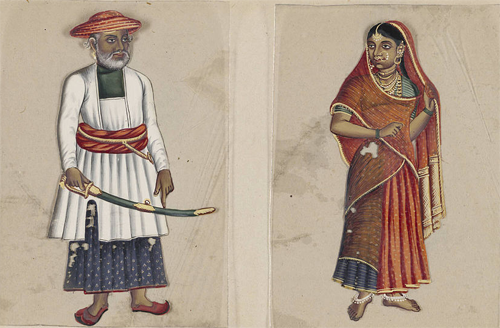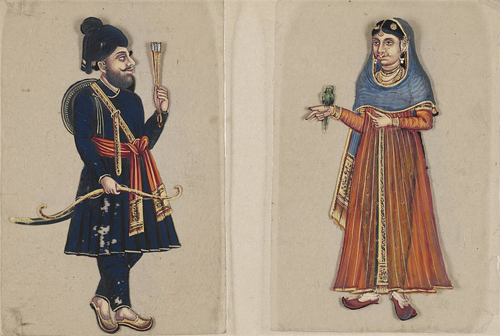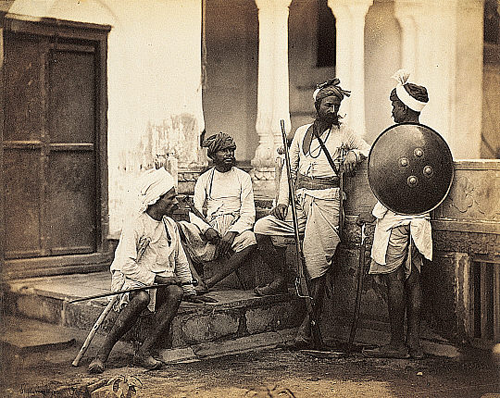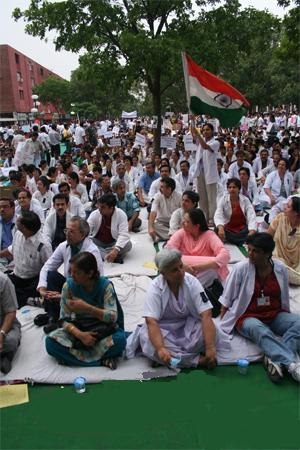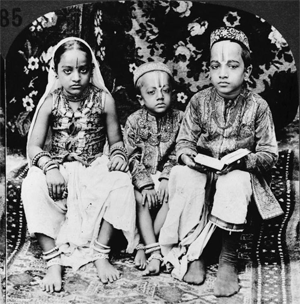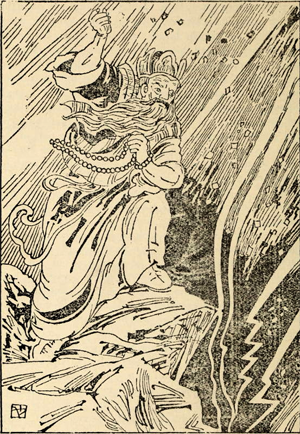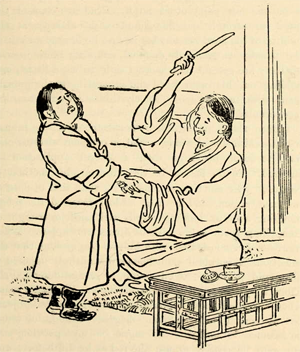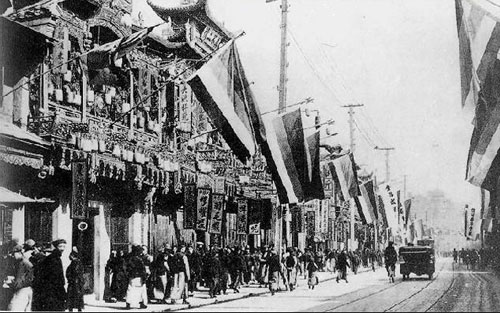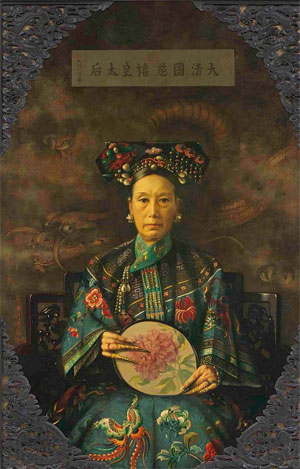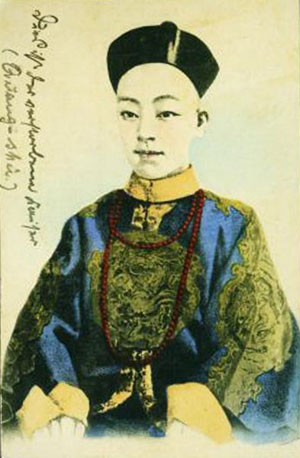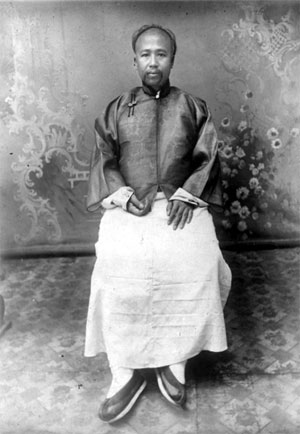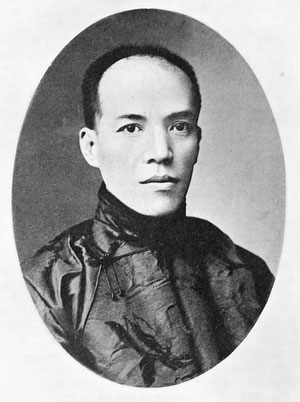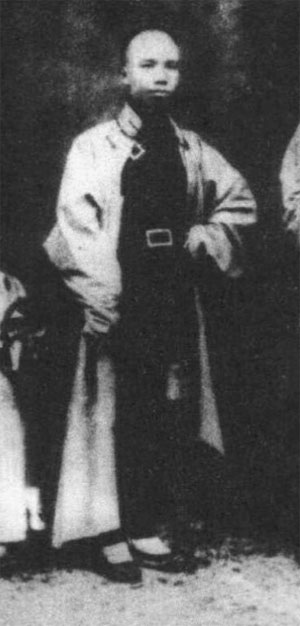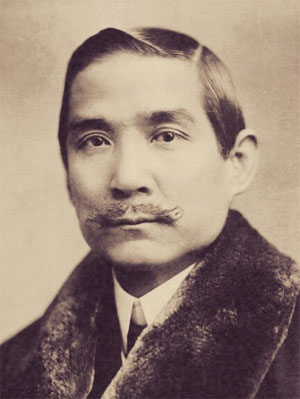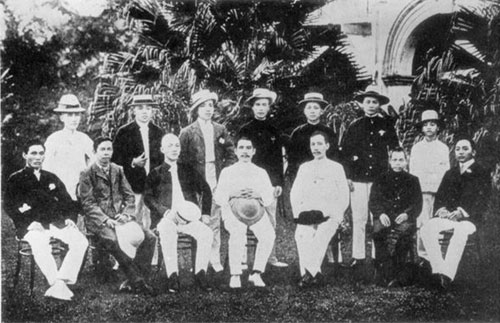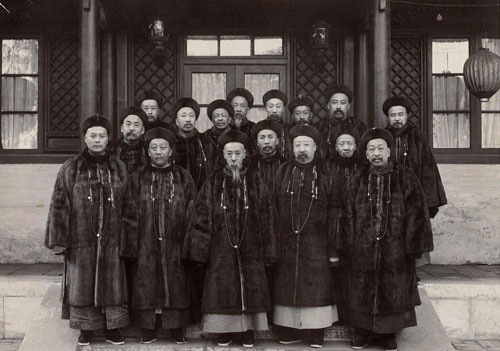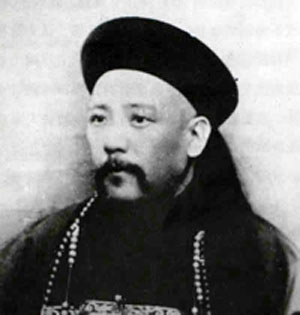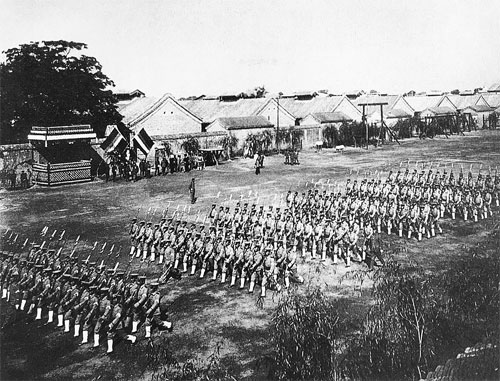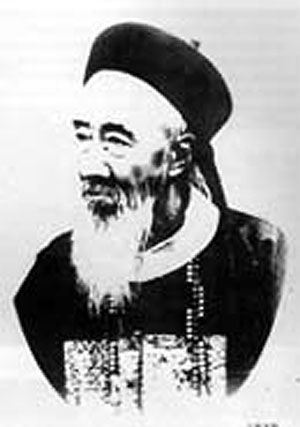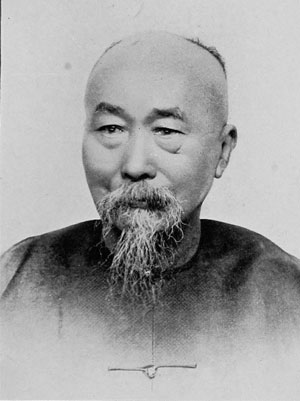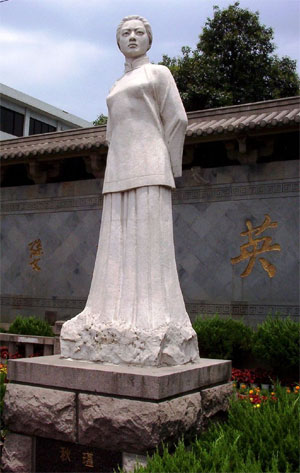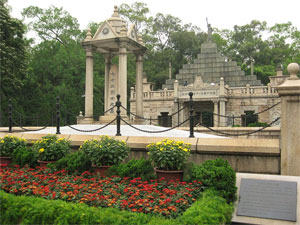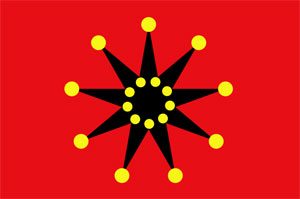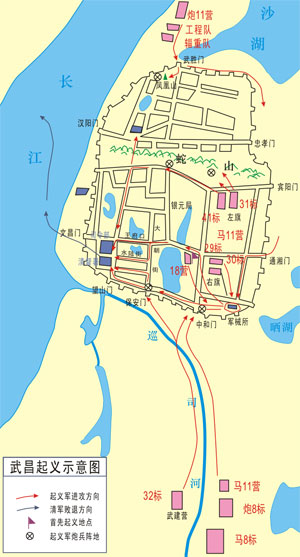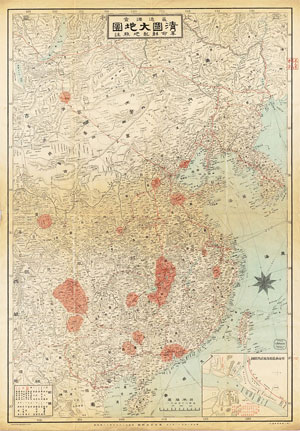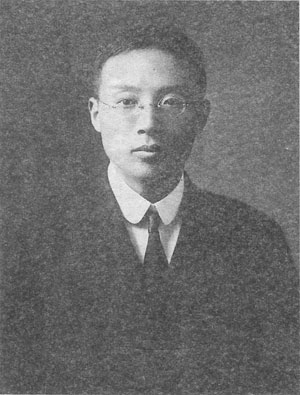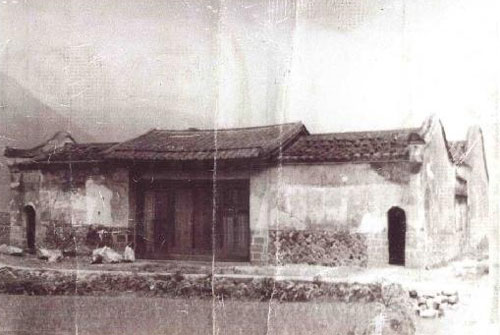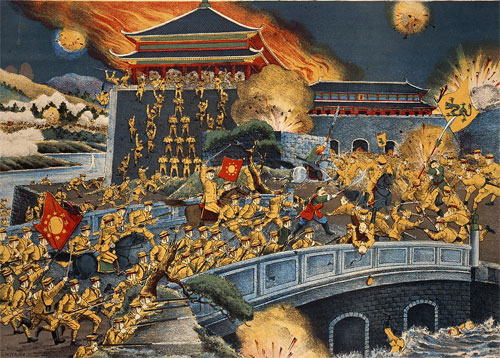Part 3 of 3
Caste politicsSee also: Caste politics
Economic inequalityEconomic inequality seems to be related to the influence of inherited social-economic stratification.[citation needed] A 1995 study notes that the caste system in India is a system of exploitation of poor low-ranking groups by more prosperous high-ranking groups.[197] A report published in 2001 note that in India 36.3% of people own no land at all, 60.6% own about 15% of the land, with a very wealthy 3.1% owning 15% of the land.[198] A study by Haque reports that India contains both the largest number of rural poor, and the largest number of landless households on the planet.[citation needed] Haque also reports that over 90 percent of both scheduled castes (low-ranking groups) and all other castes (high-ranking groups) either do not own land or own land area capable of producing less than $1000 per year of food and income per household. However, over 99 percent of India's farms are less than 10 hectares, and 99.9 percent of the farms are less than 20 hectares, regardless of the farmer or landowner's caste. Indian government has, in addition, vigorously pursued agricultural land ceiling laws which prohibit anyone from owning land greater than mandated limits. India has used this law to forcibly acquire land from some, then redistribute tens of millions of acres to the landless and poor of the low-caste. Haque suggests that Indian lawmakers need to reform and modernise the nation's land laws and rely less on blind adherence to land ceilings and tenancy reform.[263][264]
In a 2011 study, Aiyar too notes that such qualitative theories of economic exploitation and consequent land redistribution within India between 1950 and 1990 had no effect on the quality of life and poverty reduction. Instead, economic reforms since the 1990s and resultant opportunities for non-agricultural jobs have reduced poverty and increased per capita income for all segments of Indian society.[265] For specific evidence, Aiyar mentions the following
Critics believe that the economic liberalisation has benefited just a small elite and left behind the poor, especially the lowest Hindu caste of dalits. But a recent authoritative survey revealed striking improvements in living standards of dalits in the last two decades. Television ownership was up from zero to 45 percent; cellphone ownership up from zero to 36 percent; two-wheeler ownership (of motorcycles, scooters, mopeds) up from zero to 12.3 percent; children eating yesterday's leftovers down from 95.9 percent to 16.2 percent ... Dalits running their own businesses up from 6 percent to 37 percent; and proportion working as agricultural labourers down from 46.1 percent to 20.5 percent.
Cassan has studied the differential effect within two segments of India's Dalit community. He finds India's overall economic growth has produced the fastest and more significant socio-economic changes. Cassan further concludes that legal and social program initiatives are no longer India's primary constraint in further advancement of India's historically discriminated castes; further advancement are likely to come from improvements in the supply of quality schools in rural and urban India, along with India's economic growth.[266]
Apartheid and discriminationThe maltreatment of Dalits in India has been described by some authors[which?] as "India's hidden apartheid".[199][267] Critics of the accusations point to substantial improvements in the position of Dalits in post-independence India, consequent to the strict implementation of the rights and privileges enshrined in the Constitution of India, as implemented by the Protection of Civil rights Act, 1955.[268] They also argue that the practise had disappeared in urban public life.[269][page needed]
Sociologists Kevin Reilly, Stephen Kaufman and Angela Bodino, while critical of caste system, conclude that modern India does not practice apartheid since there is no state-sanctioned discrimination.[270] They write that casteism in India is presently "not apartheid. In fact, untouchables, as well as tribal people and members of the lowest castes in India benefit from broad affirmative action programmes and are enjoying greater political power."[271]
A hypothesis that caste amounts to race has been rejected by some scholars.[272][273][274] Ambedkar, for example, wrote that "The Brahmin of Punjab is racially of the same stock as the Chamar of Punjab. The Caste system does not demarcate racial division. The Caste system is a social division of people of the same race."[citation needed] Various sociologists, anthropologists and historians have rejected the racial origins and racial emphasis of caste and consider the idea to be one that has purely political and economic undertones. Beteille writes that "the Scheduled Castes of India taken together are no more a race than are the Brahmins taken together. Every social group cannot be regarded as a race simply because we want to protect it against prejudice and discrimination"[citation needed], and that the 2001 Durban conference on racism hosted by the U.N. is "turning its back on established scientific opinion".[274][better source needed]
In popular cultureMulk Raj Anand's debut novel, Untouchable (1935), is based on the theme of untouchability. The Hindi film Achhut Kannya (Untouchable Maiden, 1936), starring Ashok Kumar and Devika Rani, was an early reformist film.[citation needed] The debut novel of Arundhati Roy, The God of Small Things (1997), also has themes surrounding the caste system across religions. A lawyer named Sabu Thomas filed a petition to have the book published without the last chapter, which had graphic description of sexual acts between members of different castes.[275][better source needed] Thomas claimed the alleged obscenity in the last chapter deeply hurts the Syrian Christian community, the basis of the novel.[276]
See also• Article 15
• Caste systems in Africa
• Caste system in Sri Lanka
• Manual scavenging – a caste-based activity in India, officially abolished but still ongoing
• Social class
Notes1. Sweetman notes that the Brahmin had a strong influence on the British understanding of India, thereby also influencing the British rule and western understandings of Hinduism, and gaining a stronger position in Indian society.[140]
2. Karade states, "the caste quarantine list was abolished by independent India in 1947 and criminal tribes law was formally repealed in 1952 by its first parliament".[172]
3. Dirks (2001a, p. 5): "Rather, I will argue that caste (again, as we know it today) is a modern phenomenon, that it is, specifically, the product of an historical encounter between India and Western colonial rule. By this I do not mean to imply that it was simply invented by the too clever British, now credited with so many imperial patents that what began as colonial critique has turned into another form of imperial adulation. But I am suggesting that it was under the British that 'caste' became a single term capable of expressing, organising, and above all 'systematising' India's diverse forms of social identity, community, and organisation. This was achieved through an identifiable (if contested) ideological canon as the result of a concrete encounter with colonial modernity during two hundred years of British domination. In short, colonialism made caste what it is today."
4. Dirks, Scandal of Empire (2006, p. 27): "The institution of caste, for example, a social formation that has been seen as not only basic to India but part of its ancient constitution, was fundamentally transformed by British colonial rule."
5. Sweetman cites Dirks (1993), The Hollow Crown, University of Michigan Press, p.xxvii
6. For example, some British believed Indians would shun train travel because tradition-bound South Asians were too caught up in caste and religion, and that they would not sit or stand in the same coaches out of concern for close proximity to a member of higher or lower or shunned caste. After the launch of train services, Indians of all castes, classes and gender enthusiastically adopted train travel without any concern for so-called caste stereotypes.[188][189]
References1. de Zwart (2000).
2. Bayly (2001), pp. 25–27, 392.
3. St. John (2012), p. 103.
4. Sathaye (2015), p. 214.
5. "What is India's caste system?". BBC News. 25 February 2016. Retrieved 27 May 2017. Independent India's constitution banned discrimination on the basis of caste, and, in an attempt to correct historical injustices and provide a level playing field to the traditionally disadvantaged, the authorities announced quotas in government jobs and educational institutions for scheduled castes and tribes, the lowest in the caste hierarchy, in 1950.
6. Bayly (2001), p. 392.
7. Bayly (2001), pp. 26–27:What happened in the initial phase of this two-stage sequence was the rise of the royal man of prowess. In this period, both kings and the priests and ascetics with whom men of power were able to associate their rule became a growing focus for the affirmation of a martial and regal form of caste ideal. (...) The other key feature of this period was the reshaping of many apparently casteless forms of devotional faith in a direction which further affirmed these differentiations of rank and community.
8. Nehru, Jawaharlal, 1889-1964. (2004). The discovery of India. New Delhi: Penguin Books. ISBN 0670058017. OCLC 57764885.
9. Dirks (2001b), pp. 215–229.
10. LeVine, Sarah (2009). Rebuilding Buddhism: The Theravada Movement in Twentieth-Century Nepal. Harvard University Press. p. 21. ISBN 978-0-674-02554-7.
11. Cohen (2001), p. 21
12. Dirks (2001a), p. 3.
13. Omvedt, Gail (2014). Buddhism in India: Challenging Brahmanism and Caste. Sage Classics. p. 252. ISBN 978-81-321-1028-6.
14. Doniger, Wendy (1999). Merriam-Webster's encyclopedia of world religions. Springfield, MA: Merriam-Webster. p. 186. ISBN 978-0-87779-044-0.
15. Stanton, Andrea (2012). An Encyclopedia of Cultural Sociology of the Middle East, Asia, and Africa. US: Sage Publications. pp. 12–13. ISBN 978-1-4129-8176-7.
16. Basham, Wonder that was India (1954), p. 148.
17. Fowler, Hinduism (1997), pp. 19–20.
18. Bayly (2001), p. 9.
19. Fowler, Hinduism (1997), p. 23.
20. Harrington, Austin (2006). Encyclopedia of social theory. Routledge. p. 49. ISBN 978-0-415-29046-3.
21. Dirks (2001a), pp. 57–60.
22. Samuel, Origins of Yoga and Tantra (2008), p. 87–88.
23. Bayly (2001), p. 10.
24. Samuel, Origins of Yoga and Tantra (2008), p. 87.
25. Ingold, Tim (1994). Companion encyclopedia of anthropology. Routledge. pp. 1026–1027. ISBN 978-0-415-28604-6.
26. "Caste, n." Oxford English Dictionary. 1989.
27. Corbridge, Harriss & Jeffrey (2013), p. 239.
28. Ghurye (1969), pp. 1–2.
29. Ghurye (1969), pp. 2–22.
30. Ghurye (1969), pp. 2–5.
31. Ghurye (1969), pp. 6–7.
32. Ghurye (1969), pp. 7–10.
33. Ghurye (1969), pp. 10–15.
34. Ghurye (1969), pp. 11–12.
35. Ghurye (1969), pp. 15–16.
36. Ghurye (1969), pp. 16–17.
37. Ghurye (1969), pp. 18–19.
38. Ghurye (1969), pp. 22.
39. Pradip Bose (Editor, A.R. Momin) (1996). The legacy of G.S. Ghurye : a centennial festschrift. Popular. pp. 65–68. ISBN 978-81-7154-831-6.
40. Gerald Berreman (1967). "Caste as social process". Southwestern Journal of Anthropology. 23 (4): 351–370. JSTOR 3629451.
41. Midgley, James (2011). Colonialism and welfare : social policy and the British imperial legacy. United Kingdom: Edward Elgar. pp. 89–90. ISBN 978-0-85793-243-3.
42. Ghurye (1969), pp. 136–139.
43. Ghurye (1969), pp. 117–125.
44. Carol Upadhya (March 2002). "The Hindu Nationalist Sociology of G.S. Ghurye". Sociological Bulletin. 51 (1): 28–57. JSTOR 23620062.
45. Pradip Bose (Editor, A.R. Momin) (1996). The legacy of G.S. Ghurye : a centennial festschrift. Popular. pp. 66–67. ISBN 978-81-7154-831-6. [On caste] Ghurye (...) is much influenced by the nineteenth century orientalist historical explanations, which were based basically on three kinds of formulations: the Indo-European or Dravidian theory, the racial theory and the diffusionist theory. (...) At a subsequent stage European social theory, evident in census reports and ethnographic accounts also shape Ghurye's account of the caste system.
46. Midgley, James (2011). Colonialism and welfare : social policy and the British imperial legacy. United Kingdom: Edward Elgar. pp. 86–88. ISBN 978-0-85793-243-3.
47. Ghurye (1969), pp. 278–279; this is p. 158–159 in the 1932 edition of Ghurye.
48. Chapman, Religious vs. Regional Determinism (1993), pp. 10–14.
49. Inden (2001), p. 59.
50. Sharma (2000), p. 132.
51. Béteille (1996), pp. 15–25.
52. Waldrop, Anne (2004). "Dalit Politics in India and New Meaning of Caste". Forum for Development Studies. 31 (2): 275–305. doi:10.1080/08039410.2004.9666283.
53. Silverberg (1969).
54. M. N. Srinivas, Coorgs of South India (1952), p. 32.
55. Dirks (2001a), pp. 55–58.
56. Gupta (2000), p. 181.
57. Bayly (2001), pp. 19–24.
58. Gupta (2000), pp. 180–183.
59. Dirks (2001a), pp. 56–57.
60. Dirks (2001a), pp. 38–43.
61. Bayly (2001), pp. 38–43.
62. Gupta (2000), p. 184.
63. Bayly (2001), pp. 5–7.
64. Dirks (2001a), p. 59.
65. Ganguly, Debjani (2005). Caste, colonialism and counter-modernity: notes on a postcolonial hermeneutics of caste. Routledge. pp. 5–10. ISBN 978-0-415-54435-1.
66. Samuel, Origins of Yoga and Tantra (2008), pp. 83–89.
67. Samuel, Origins of Yoga and Tantra (2008), pp. 86–87.
68. Bayly (2001), p. 8.
69. Thapar (2004), p. 63.
70. David Lorenzen (2006). Who invented Hinduism : essays on religion in History. Yoda Press. pp. 147–149. ISBN 978-81-902272-6-1.
71. Jamison, Stephanie; et al. (2014). The Rigveda : the earliest religious poetry of India. Oxford University Press. pp. 57–58. ISBN 978-0-19-937018-4.
72. Ingold, Tim (1994). Companion encyclopedia of anthropology. Routledge. p. 1026. ISBN 978-0-415-28604-6.
73. Bayly (2001), p. 29.
74. Fowler, Hinduism (1997), pp. 23–24.
75. Bayly (2001), pp. 263–264.
76. Gupta (2000), p. 212.
77. Gupta (2000), p. 218.
78. Barbara Metcalf, Thomas Metcalf (2012). A concise history of modern India. Cambridge University Press. p. 24. ISBN 978-1-107-02649-0.
79. Gupta (2000), pp. 190–191.
80. Mikael Aktor (2002). "Rules of untouchability in ancient and medieval law books: Householders, competence, and inauspiciousness". International Journal of Hindu Studies. 6 (3): 244, 243–274. doi:10.1007/s11407-002-0002-z.
81. Olivelle, Patrick (2008). Chapter 9. Caste and Purity in Collected essays. Firenze, Italy: Firenze University Press. pp. 240–241. ISBN 978-88-8453-729-4.
82. Olivelle, Patrick (2008). Chapter 9. Caste and Purity in Collected essays. Firenze, Italy: Firenze University Press. pp. 240–245. ISBN 978-88-8453-729-4.
83. Dumont, Homo Hierarchicus (1980), pp. 66, 68, 73, 193.
84. Sharma (1958), p. 18.
85. Sharma (1958), pp. 22–23.
86. Sharma (1958), pp. 27–28.
87. Sharma (1958), pp. 29–31.
88. Sharma (1958), p. 40.
89. Sharma (1958), p. 44.
90. Sharma (1958), pp. 46–47.
91. Sharma (1958), p. 48.
92. Sharma (1958), p. 58.
93. Sharma (1958), pp. 59–60.
94. Chakravarti (1985), p. 358.
95. Chakravarti (1985), p. 357.
96. Chakravarti (1985), p. 359.
97. Chakravarti (2003), pp. 47,49.
98. Masefield (1986), p. 148.
99. Masefield (1986), p. 149.
100. Chakravarti (2003), pp. 45–46.
101. Hiltebeitel (2011), pp. 529–531.
102. Hiltebeitel (2011), p. 532.
103. Hiltebeitel (2011), p. 594.
104. Jaini, Padmanabh (1998). The Jaina path of purification. Motilal Banarsidass. pp. 294, 285–295. ISBN 978-81-208-1578-0.
105. Jaini, Padmanabh (1998). The Jaina path of purification. Motilal Banarsidass. p. 289. ISBN 978-81-208-1578-0.
106. Jaini, Padmanabh (1998). The Jaina path of purification. Motilal Banarsidass. p. 290. ISBN 978-81-208-1578-0.
107. Jaini, Padmanabh (2000). Collected papers on Jaina studies. Motilal Banarsidass Publishers. p. 340. ISBN 978-81-208-1691-6.
108. Jaini, Padmanabh (2000). Collected papers on Jaina studies. Motilal Banarsidass Publishers. pp. 340–341. ISBN 978-81-208-1691-6.
109. Talbot, Precolonial India (2001), pp. 50–51.
110. Orr, Leslie (2000). Donors, devotees, and daughters of God temple women in medieval Tamilnadu. Oxford University Press. pp. 30–31. ISBN 978-0-19-509962-1.
111. Eaton, Richard (2008). A social history of the Deccan, 1300–1761. Cambridge University Press. pp. 15–16. ISBN 978-0-521-51442-2.
112. Orr, Leslie (2000). Donors, devotees, and daughters of God temple women in medieval Tamilnadu. Oxford University Press. p. 30. ISBN 978-0-19-509962-1.
113. The New Cambridge History of India: Vijayanagara by Burton Stein p.134
114. The Trading World of the Tamil Merchant: Evolution of Merchant Capitalism in the Coromandel by Kanakalatha Mukund p.166
115. Al-Hind, the Making of the Indo-Islamic World: Early Medieval India and the making of the Indo-Islamic World by André Wink p.321
116. Bayly (2001), pp. 3–4.
117. Kolff, Dirk (2002). Naukar, Rajput, and sepoy : the ethnohistory of the military labour market in Hindustan, 1450–1850. Cambridge University Press. pp. 198–199. ISBN 978-0-521-52305-9.
118. Maclean, Derryl (1997). Religion and society in Arab Sind. Netherlands: Brill Academic Publishers. pp. 30–31. ISBN 978-90-04-08551-0.
119. Eaton, Richard (1993). The rise of Islam and the Bengal frontier, 1204–1760. Berkeley: University of California Press. pp. 117–122. ISBN 978-0-520-08077-5.
120. Maclean, Derryl (1997). Religion and society in Arab Sind. Netherlands: Brill Academic Publishers. pp. 31–34, 49–50. ISBN 978-90-04-08551-0.
121. Maclean, Derryl (1997). Religion and society in Arab Sind. Netherlands: Brill Academic Publishers. pp. 31–32, 49. ISBN 978-90-04-08551-0.
122. Maclean, Derryl (1997). Religion and society in Arab Sind. Netherlands: Brill Academic Publishers. pp. 32–33, 49–50. ISBN 978-90-04-08551-0.
123. Maclean, Derryl (1997). Religion and society in Arab Sind. Netherlands: Brill Academic Publishers. pp. 33–34, 49–50. ISBN 978-90-04-08551-0.
124. Jackson, Peter (2003). The Delhi Sultanate : a political and military history. Cambridge University Press. pp. 14–15. ISBN 978-0-521-54329-3.
125. Malik, Jamal (2008). Islam in South Asia a short history. Brill. p. 157. ISBN 978-90-04-16859-6.
126. Malik, Jamal (2008). Islam in South Asia a short history. Brill. pp. 152–157, 221. ISBN 978-90-04-16859-6.
127. Malik, Jamal (2008). Islam in South Asia a short history. Brill. pp. 149–153. ISBN 978-90-04-16859-6. "Islamic norms permit hierarchical structure, i.e., equality in islam is only in relation to God, rather than between men. Early Muslims and Muslim conquerors in India reproduced social segregation among Muslims and the conquered religious groups. (...) The writings of Abu al-Fadl at Akbar's court mention caste. (...) The courtier and historian Zia al-Din al-Barani not only avowedly detested Hindus, in his Fatawa-ye Jahandari, he also vehemently stood for ashraf supremacy.
128. Cook, Michael (2010). The new Cambridge history of Islam. Cambridge University Press. p. 481. ISBN 978-0-521-84443-7.
129. Habib, Irfan (2002). Essays in Indian history : towards a Marxist perception, with the economic history of Medieval India: a survey. London: Anthem Press. pp. 250–251. ISBN 978-1-84331-061-7.
130. Habib, Irfan (2002). Essays in Indian history : towards a Marxist perception, with the economic history of Medieval India: a survey. London: Anthem Press. pp. 150–152. ISBN 978-1-84331-061-7.
131. Eaton, Richard (1993). The rise of Islam and the Bengal frontier, 1204–1760. Berkeley: University of California Press. p. 103. ISBN 978-0-520-08077-5.
132. Eaton, Richard (1993). The rise of Islam and the Bengal frontier, 1204–1760. Berkeley: University of California Press. pp. 102–103, 224–226. ISBN 978-0-520-08077-5.
133. Bayly (2001), pp. 25–28.
134. Bayly (2001), pp. 29–30.
135. Bayly (2001), p. 30.
136. Bayly (2001), pp. 30–31.
137. Bayly (2001), p. 31.
138. Peers, Douglas (2012). India and the British empire. Oxford University Press. pp. 104–108. ISBN 978-0-19-925988-5.
139. Bayly (2001), p. 27.
140. Sweetman (2004), p. 13.
141. Dirks (2001a), pp. 28.
142. Dirks (2001a), pp. 29–30.
143. St. John (2012), p. 103
144. Bayly (2001), pp. 125–126.
145. Dirks (2001a), pp. 212–217.
146. Bayly (2001), pp. 125–127.
147. Raheja, Gloria (2000). Colonial subjects : essays on the practical history of anthropology (editors: Peter Pels and Oscar Salemink). University of Michigan Press. pp. 120–122. ISBN 978-0-472-08746-4.
148. Stokes (1973).
149. Dudley-Jenkins, Laura (October 2009). Identity and Identification in India (see review of sociology journal articles starting page 42). Routledge. ISBN 978-0-415-56062-7.
150. Bates, Crispin (1995). "Race, Caste and Tribe in Central India: the early origins of Indian anthropometry" (PDF). Edinburgh Papers in South Asian Studies (3). Archived from the original(PDF) on 14 June 2013.
151. Ghuman, Paul (2013). British Untouchables: A Study of Dalit Identity and Education. Ashgate Publishing, Ltd. p. 18. ISBN 9781409494317.
152. Jha, Pravin Kumar (2012). Indian Politics in Comparative Perspective. Pearson Education India. p. 102. ISBN 9788131798874.
153. JT (2014). Origin of Caste in India. Partridge Publishing. p. 18. ISBN 9781482819144.
154. Malešević, Siniša; Haugaard, Mark (2007). Ernest Gellner and Contemporary Social Thought. Cambridge University Press. p. 67. ISBN 9780521882910.
155. Cannadine, David (2002). Ornamentalism: How the British Saw Their Empire. Oxford University Press.
156. Trautmann (1997).
157. "Online Collection (The Riddell Gifts)". National Galleries of Scotland. 1985.
158. Stokes (1980), pp. 38–43.
159. Dirks (2001a), pp. 198–225.
160. K. Parker (Gerald Larson: Editor) (2001). Religion and personal law in secular India a call to judgment. Indiana University Press. pp. 184–189. ISBN 978-0-253-21480-5.
161. S Nigam (1990). "Disciplining and Policing the "Criminals by Birth", Part 1: The Making of a Colonial Stereotype – The Criminal Tribes and Castes of North India". Indian Economic & Social History Review. 27 (2): 131–164. doi:10.1177/001946469002700201.
162. S Nigam (1990). "Disciplining and Policing the "Criminals by Birth", Part 2: The Development of a Disciplinary System, 1871–1900". Indian Economic & Social History Review. 27 (3): 257–287. doi:10.1177/001946469002700302.
163. Stern, Robert (2001). Democracy and dictatorship in South Asia. Praeger. pp. 53–54. ISBN 978-0-275-97041-3.
164. Cole, Simon (2001). Suspect identities : a history of fingerprinting and criminal identification. Cambridge, MA: Harvard University Press. pp. 67–72. ISBN 978-0-674-01002-4. [British] amateur ethnographers believed that Indian castes, because of their strictures against intermarriage, represented pure racial types, and they concocted the notion of racially inferior criminal castes or 'criminal tribes', inbred ethnic groups predisposed to criminal behavior by both cultural tradition and hereditary disposition
165. Rawat, Ramnarayan (2011). Reconsidering untouchability : Chamars and Dalit history in North India. Bloomington: Indiana University Press. pp. 26–27. ISBN 978-0-253-22262-6.
166. Dirks (2001a), pp. 176–188.
167. Schwarz, Henry (2010). Constructing the criminal tribe in colonial India : acting like a thief. US: Wiley-Blackwell. pp. 69–78. ISBN 978-1-4051-2057-9.
168. Schwarz, Henry (2010). Constructing the criminal tribe in colonial India : acting like a thief. US: Wiley-Blackwell. pp. 71–74. ISBN 978-1-4051-2057-9.
169. Birinder P. Singh (2010). Criminal tribes of Punjab : a social-anthropological inquiry. New York: Routledge. pp. liv–lvi, Introduction. ISBN 978-0-415-55147-2.
170. Chaturvedi, Vinayak (2007). Peasant pasts history and memory in western India. Berkeley: University of California Press. pp. 122–126. ISBN 978-0-520-25076-5. In 1911, the entire Dharala [a Rajput caste] population of nearly 250,000 individuals in Kheda district was declared a criminal tribe under Act IIII of 1911, the Criminal Tribes Act.
171. Schwarz, Henry (2010). Constructing the criminal tribe in colonial India : acting like a thief. US: Wiley-Blackwell. pp. 99–101. ISBN 978-1-4051-2057-9.
172. Karade, Jagan (2014). Development of scheduled castes and scheduled tribes in India. Newcastle, UK: Cambridge Scholars. pp. 25, 23–28. ISBN 978-1-4438-1027-2.
173. Brown, Mark (2014). Penal power and colonial rule. Routledge. pp. 176, 107, 165–188. ISBN 978-0-415-45213-7. [The] criminal tribes are destined by the usage of caste to commit crime and whose dependents will be offenders against the law, until the whole tribe is exterminated or accounted for...
174. Rachel Tolen (Jennifer Terry and Jacqueline Urla: Editors) (1995). Deviant bodies. Indiana University Press. pp. 84–88. ISBN 978-0-253-20975-7.
175. Yang, A. (1985). Crime and criminality in British India. US: University of Arizona Press. pp. 112–127. ISBN 978-0-8165-0951-5.
176. Nesbitt, Eleanor (2005). Sikhism a very short introduction. Oxford; New York: Oxford University Press. pp. 119–120. ISBN 978-0-19-280601-7.
177. Guilhem Cassan (2011). "Law and Identity Manipulation: Evidence from Colonial Punjab" (PDF). London School of Economics and Laboratoire d'Economie Appliquee (LEA-INRA), Paris: 2–3.
178. Ballantyne, Tony (2007). Textures of the Sikh past : new historical perspectives. New York: Oxford University Press. pp. 134–142. ISBN 978-0-19-568663-0.
179. Singh, Khushwant (2004). A history of the Sikhs. New Delhi: Oxford University Press. pp. 155–156. ISBN 978-0-19-567309-8.
180. Debin Ma and Jan Luiten Van Zanden (Editors) (2011). Law and long-term economic change a Eurasian perspective (Anand Swamy). Stanford, California: Stanford University Press. pp. 149–150. ISBN 978-0-8047-7273-0.
181. Nair, Neeti (2011). Changing homelands. Cambridge, MA: Harvard University Press. pp. 85–86. ISBN 978-0-674-05779-1.
182. Guha, Sumit (2013). Beyond Caste. Leiden, Netherlands: Brill Academic. pp. 199–200. ISBN 978-90-04-24918-9.
183. Dirks (2001a).
184. Dirks, Scandal of Empire (2006), p. 27.
185. de Zwart (2000), p. 235.
186. Sweetman (2004), pp. 14–15.
187. Sweetman (2004), p. 14.
188. Kerr, Ian (2007). Engines of change: the railroads that made India. Praeger Publishers. pp. 89–99. ISBN 978-0-275-98564-6.
189. Arnold, David (January 1983). "White colonization and labour in 19th century India". Journal of Imperial and Commonwealth History. XI (2): 133–157. doi:10.1080/03086538308582635.
190. Corbridge & Harriss (2000), pp. 8, 243.
191. The Economist (29 June 2013), Affirmative Action, India Reservations
192. Omvedt, Gail (2012). "A Part That Parted". Outlook India. Retrieved 12 August 2012.
193. Sharma, Mahesh Dutt (27 May 2017). Motivating Thoughts of Ambedkar. Prabhat Prakashan. ISBN 9789351869375.
194. Smelser & Lipset (2005), pp. 8–15, 160–174.
195. Markovits, Claude (2008). The global world of Indian merchants, 1750–1947. Cambridge: Cambridge University Press. pp. 48–49. ISBN 978-0-521-08940-1.
196. Markovits, Claude (2008). The global world of Indian merchants, 1750–1947. Cambridge: Cambridge University Press. p. 251. ISBN 978-0-521-08940-1.
197. India – A Country Study, US Library of Congress, 1995, Chapter 5.
198. Rural Poverty Report 2001 – The Challenge of Ending Rural Poverty Archived 24 September 2015 at the Wayback Machine, Chapter 3, p. 77. IFAD, 2001.
199. Gopal Guru, with Shiraz Sidhva. India's "hidden apartheid" Archived 11 January 2007 at the Wayback Machine.
200. Gosal, R. P. S. (September 1987). "Distribution of scheduled caste population in India". Social Science Information. 26 (3): 493–511. doi:10.1177/053901887026003002.
201. Leonard, Karen; Weller, Susan (August 1980). "Declining subcaste endogamy in India: the Hyderabad Kayasths, 1900–75" (PDF). American Ethnologist. 7 (3): 504–517. doi:10.1525/ae.1980.7.3.02a00080.
202. "The Dollar Brides – Indian girls marrying NRIs often escape to a hassle-free life". The Telegraph. Calcutta, India. 28 January 2003.
203. "UN report slams India for caste discrimination". CBC News. 2 March 2007.
204. "Caste, Ethnicity and Exclusion in South Asia: The Role of Affirmative Action Policies in Building Inclusive Societies" (PDF).
205. "Crime statistics, 87 major countries". UN ODC. 2007.
206. "Crimes and Crime Rates by Type of Offense: 1980 to 2009" (PDF). Census – US. 2010. Archived from the original (PDF) on 20 October 2011.
207. "Constitution of India". Ministry of Law, Government of India. Archived from the original on 2 April 2012.
208. "India: (Prevention of Atrocities) Act, 1989; No. 33 of 1989". Human Rights Watch. 1989.
209. "About NCST". Government of India. 2011. Archived from the original on 14 January 2012.
210. Marc Galanter, Competing Equalities: Law and the Backward Classes in India. Delhi: Oxford University Press, 1984, 84–85
211. "Caste-based Discrimination in International Human Rights Law", p. 257, by David Keane
212. "Scheduled castes and scheduled tribes population: Census 2001". Government of India. 2004.
213. Sachar, Rajinder (2006). "Sachar Committee Report (2004–2005)" (PDF). Government of India. p. 6. Archived from the original (PDF) on 2 April 2014. Retrieved 27 September 2008.
214. "Annual Report, 2007–2008" (PDF). National Commission for Backward Classes, Government of India. 2009.
215. Bhattacharya, Amit. "Who are the OBCs?". Archived from the original on 27 June 2006. Retrieved 19 April 2006. Times of India, 8 April 2006.
216. "Caste-Based Parties". Country Studies US. Retrieved 12 December 2006.
217. What is India's population of other backward classes?,Yahoo News.
218. "Caste, religion, poverty census gets Cabinet nod". NDTV. 19 May 2011. Retrieved 23 July 2014.
219. "Caste and the Census". The Hindu. Chennai, India.
220. "Caste in doubt". Indian Express. 17 May 2010. Retrieved 20 January 2013.
221. Asghar Ali Engineer. "On reservation for Muslims". The Milli Gazette. Pharos. Retrieved 1 September 2004.
222. Desai and Kulkarni (May 2008). "Changing Educational Inequalities in India in the Context of Affirmative Action". Demography. 45 (2): 245–270. doi:10.1353/dem.0.0001. PMC 2474466. PMID 18613480.
223. Shankar, Deepa (2007). "What is the progress in elementary education participation in India during the last two decades?" (PDF). The World Bank.
224. Singh, Darshan (2009). "Development of Scheduled Castes in India – A Review" (PDF). Journal of Rural Development. 28 (4): 529–542. Archived from the original (PDF) on 11 February 2014.
225. Mohanty and Ram (November 2010). "Life Expectancy at Birth Among Social and Economic Groups in India" (PDF). International Institute for Population Sciences.
226. Barth, Fredrik (1971). "Aspects of Caste in South India, Ceylon and North-West Pakistan". In Leach, E. R. (ed.). Aspects of Caste in South India, Ceylon, and North-West Pakistan. Cambridge University Press. p. 113. ISBN 978-0-521-09664-5.
227. Mills, Martin A. (2002). Identity, Ritual and State in Tibetan Buddhism: The Foundations of Authority in Gelukpa Monasticism. Routledge. pp. 40–41. ISBN 978-0-7007-1470-4.
228. Ballhatchet, Kenneth (1998). Caste, Class and Catholicism in India 1789–1914. ISBN 978-0-7007-1095-9.
229. Christian Castes Encyclopædia Britannica.
230. Forrester (1980), pp. 98, 102.
231. Amaladass, Anand (1993) [1989]. "Dialogue between Hindus and the St. Thomas Christians". In Coward, Harold (ed.). Hindu-Christian dialogue: perspectives and encounters. Motilal Banarsidass. pp. 14–20. ISBN 978-81-208-1158-4.
232. Bayly (2004), pp. 243–253.
233. Fuller, Christopher J. (December 1977). "Indian Christians: Pollution and Origins". Man. New. 12 (3/4): 528–529.
234. Chaudhary (2013), p. 149.
235. Ahmad, Imtiaz (13 May 1967). "The Ashraf and Ajlaf Categories in Indo-Muslim Society". Economic and Political Weekly. 2 (19): 687. JSTOR 4357934.
236. Chaudhary (2013), p. 149–150.
237. Ahmad, Imtiaz (1978). Caste and Social Stratification Among Muslims in India. Manohar. pp. 210–211.
238. Bhatty, Zarina (1996). "Social Stratification Among Muslims in India". In Srinivas, M. N. (ed.). Caste: Its Twentieth Century Avatar. Viking. pp. 249–253.
239. Ambedkar, Bhimrao. Pakistan or the Partition of India. Thackers Publishers.
240. H. H. Risley (1903). Ethnographic Appendices, in GOI, Census of India, 1901 (see tables on Ajlaf and Arzal, and Risley discussion of these Muslim castes versus Hindu castes). 1. Calcutta: Office of the Superintendent of Government Printing. pp. 45–62. ISBN 978-1-246-03552-0.
241. Malik, Jamal (2008). Islam in South Asia: A Short History. Brill Academic. pp. 152–153. ISBN 978-90-04-16859-6.
242. Barth, Fredrik (1995). Political Leadership among Swat Pathans. London School of Economics/Berg. pp. 16–21. ISBN 978-0-485-19619-1.
243. "Pakistan NGO tackles demeaning low-caste word for 'Christians'". 2 November 2015. Archived from the original on 1 December 2016. Retrieved 30 November 2016.
244. Shami; Grant; Bittles (1994). "Consanguineous marriage within social/occupational class boundaries in Pakistan". Journal of Biosocial Science. 26 (1): 91–96. doi:10.1017/s0021932000021088.
245. Madan, T. N., ed. (1976). Muslim Communities of South Asia: Culture and Society. Vikas Publishing House. p. 114.
246. Jodhka, Surinder S. (11 May 2002). "Caste and Untouchability in Rural Punjab". Economic and Political Weekly. 37 (19): 1822. JSTOR 4412102.
247. "The Scheduled Castes in the Sikh Community – A Historical Perspective".
248. Puri, Harish K. (2004). Dalits in Regional Context. p. 214. ISBN 978-81-7033-871-0.
249. Nesbitt, Eleanor (2005). Sikhism a very short introduction. Oxford; New York: Oxford University Press. pp. 116–117. ISBN 978-0-19-280601-7.
250. Dundas, Paul (2002). The Jains. London; New York: Routledge. pp. 147–149. ISBN 978-0-415-26606-2.
251. Carrithers, M; Humphrey, C (1991). The assembly of listeners: Jains in society. Cambridge UK: Cambridge University Press. p. 46. ISBN 978-0-521-36505-5.
252. "OBCs form 41% of population: Survey".
253. India's caste system discriminates Archived 20 April 2006 at the Wayback Machine.
254. Aditya Nigam. "Caste Politics in India". Archived from the original on 28 August 2005. Retrieved 11 December 2006.
255. Singh and Roy (2011). Indian Political Thought: Themes and Thinkers. Pearson. pp. 82–90. ISBN 978-81-317-5851-9.
256. Swami Vivekananda (1952). The Complete Works of Swami Vivekananda (8 vols., Calcutta). V. pp. 25–30. ISBN 978-81-85301-46-4.
257. Lindley, Mark. "Changes in Mahatma Gandhi's views on caste and intermarriage". academia.edu. Retrieved 11 July 2017.
258. M.K. Gandhi (1936). Collected works of Mahatma Gandhi; Dr. Ambedkar's Indictment – I & II (see pages 205–207 for part I, and pages 226–227 for part II, see other pages on castes as well) (PDF). 69: 16 May 1936 – 19 October.
259. Gupta, Trisha (20 September 2008). "Visual history tells us about repressed histories". Tehelka. Archived from the original on 11 September 2012.
260. Pinney, Christopher (1998). Camera Indica: The Social Life of Indian Photographs. University Of Chicago Press. ISBN 978-0-226-66866-6.
261. Fraser, Sarah (2010). "The Face of China: Photography's Role in Shaping Image, 1860–1920". Getty Research Journal (2): 39–52.
262. Ambedkar, Dr. B. R. Pritchett, Frances (ed.). "Castes in India: Their Mechanism, Genesis, and Development".
www.columbia.edu.
263. Hanstad (2005). "Improving land access to India's rural poor" (PDF). The World Bank.
264. Haque (2006). "Improving the Rural Poors' Acces tp Land in India". DARPG, Government of India.
265. Aiyar, Swaminathan S. Anklesaria (July 2011). "The Elephant That Became a Tiger, 20 Years of Economic Reform in India" (PDF).
266. Cassan, Guilhem (September 2011). "The Impact of Positive Discrimination in Education in India: Evidence from a Natural Experiment" (PDF). Paris School of Economics and Laboratoire d'Economie Appliquee.
267. William A. Haviland, Anthropology: The Human Challenge, 13th edition, Thomson Wadsworth, 2010, ISBN 978-0-495-81084-1, p. 536 (see note 9).
268. The Constitution of India by P.M. Bakshi, Universal Law Publishing Co, ISBN 81-7534-500-4.
269. Mendelsohn & Vicziany (1998).
270. Kevin Reilly, Stephen Kaufman, Angela Bodino, Racism: A Global Reader P21, M.E. Sharpe, 2003 ISBN 0-7656-1060-4.
271. Excerpts from The Constitution of India.
272. "An Untouchable Subject?". Npr.org. 29 August 2001. Retrieved 20 January 2013.
273. Ambedkar, B. R. (1979). The Annihilation of Caste. Writings and Speeches. 1. Education Department, Government of Maharashtra. p. 49.
274. Beteille (2001).
275. GradeSaver. "The God of Small Things Study Guide | GradeSaver".
www.gradesaver.com. Retrieved 10 May 2019.
276. Iype, George. "Obscenity case slammed against Arundhati Roy".
www.rediff.com. Retrieved 10 May2019.
Bibliography• Basham, Arthur L. (1954), The Wonder That Was India: A Survey of the Culture of the Indian Sub-Continent before the Coming of the Muslims, Grove Press – via Questia
• Bayly, Susan (2001), Caste, Society and Politics in India from the Eighteenth Century to the Modern Age, Cambridge University Press, ISBN 978-0-521-26434-1
• Bayly, Susan (2004), Saints, Goddesses and Kings: Muslims and Christians in South Indian Society, Cambridge University Press, ISBN 978-0-521-89103-5
• Béteille, André (March 1996), "Varna and jati", Sociological Bulletin, 45 (1): 15–27, JSTOR 23619694
• Beteille, Andre (3 October 2001), "Race and Caste", The Hindu, retrieved 6 July 2012
• Cohen, Stephen P. (2001), India: Emerging Power, Brookings Institution Press, ISBN 978-0-8157-9839-2
• Chakravarti, Uma (2 March 1985), "Towards a Historical Sociology of Stratification in Ancient India: Evidence from Buddhist Sources", Economic and Political Weekly, 20 (9): 356–360, JSTOR 4374135
• Chakravarti, Uma (2003), Gendering Caste Through a Feminist Lens, Popular Prakashan, ISBN 978-81-85604-54-1
• Chapman, Graham (1993), "Religious vs. Regional Determinism India, Pakistan and Bangladesh as Inheritors of Empire", in Arnold, David; Robb, Peter (eds.), Institutions and Ideologies: A SOAS South Asia Reader, Curzon Press, ISBN 978-0-7007-0284-8
• Chaudhary, Nandita; Anandalakshmy, S.; Valsiner, Jaan (2013), Cultural Realities of Being: Abstract Ideas Within Everyday Lives, Routledge, ISBN 978-1-134-74349-0
• Corbridge, Stuart; Harriss, John; Jeffrey, Craig (2013), India Today: Economy, Politics and Society, John Wiley & Sons, ISBN 978-0-7456-6535-1
• Corbridge, Stuart; Harriss, John (2000), Reinventing India: Liberalization, Hindu Nationalism and Popular Democracy, Polity Press
• de Zwart, Frank (July 2000), "The Logic of Affirmative Action: Caste, Class and Quotas in India", Acta Sociologica, 43 (3): 235–249, doi:10.1177/000169930004300304, JSTOR 4201209
• Dirks, Nicholas B. (2001a), Castes of Mind: Colonialism and the Making of New India, ISBN 978-0-691-08895-2
• Dirks, Nicholas B. (2001b), "Discriminating Difference: The Postcolonial Politics of Caste in India", in Burguière, André; Grew, Raymond (eds.), The Construction of Minorities: Cases for Comparison Across Time and Around the World, University of Michigan Press, ISBN 978-0-472-06737-4
• Dirks, Nicholas B. (2006), The Scandal of Empire: India and the creation of imperial Britain, Harvard University Press, ISBN 978-0-674-03426-6
• Dumont, Louis (1980) [1966], Homo Hierarchicus: The Caste System and Its Implications (Reprint, revised ed.), University of Chicago Press, ISBN 978-0-226-16963-7
• Forrester, Duncan B. (1980), Caste and Christianity: Attitudes and Policies on Caste of Anglo-Saxon Protestant Missions in India, Curzon Press and Humanities Press
• Fowler, Jeaneane (1997), Hinduism: Beliefs and Practices, Sussex Academic Press, ISBN 978-1-898723-60-8
• Ghurye, G. S. (1969) [first published 1932], Caste and Race in India (Fifth ed.), Popular Prakashan, ISBN 978-81-7154-205-5
• Gupta, Dipankar (2000), Interrogating Caste: Understanding hierarchy & difference in Indian society, Penguin Books, ISBN 978-0-14-029706-5
• Hiltebeitel, Alf (2011), Dharma : its early history in law, religion, and narrative, Oxford University Press, ISBN 978-0-19-539423-8
• Inden, Ronald (2001), Imagining India, Indiana University Press, ISBN 978-0-253-21358-7
• Jaffrelot, Christophe (2006), "The Impact of Affirmative Action in India: More Political than Socioeconomic", India Review, 5 (2): 173–189, doi:10.1080/14736480600824516
• Juergensmeyer, Mark (2006), The Oxford Handbook of Global Religions, Oxford University Press, US, ISBN 978-0-19-972761-2
• Masefield, Peter (1986), Divine revelation in Pali Buddhism, Routledge, pp. 148–151, ISBN 978-955-9028-02-4
• Mendelsohn, Oliver; Vicziany, Maria (1998), The Untouchables, Subordination, Poverty and the State in Modern India, Cambridge University Press
• Reich, David; Thangaraj, Kumarasamy; Patterson, Nick; Price, Alkes L.; Singh, Lalji (2009), "Reconstructing Indian Population History", Nature, 461 (7263): 489–494, doi:10.1038/nature08365, PMC 2842210, PMID 19779445
• Robb, Peter (1997), The Concept of Race in South Asia (2nd ed.), Oxford University Press, ISBN 978-0-19-564268-1
• Samuel, Geoffrey (2008), The Origins of Yoga and Tantra: Indic Religions to the Thirteenth Century, Cambridge University Press, ISBN 978-1-139-47021-6
• Sathaye, Adheesh A. (17 April 2015), Crossing the Lines of Caste: Visvamitra and the Construction of Brahmin Power in Hindu Mythology, Oxford University Press, ISBN 978-0-19-027312-5
• Sharma, Arvind (2000), Classical Hindu Thought: An Introduction, Oxford University Press, ISBN 978-0-19-564441-8
• Sharma, R. S. (1958), Śūdras in Ancient India, Delhi: Motilal Banarasi Dass (published 1990)
• Silverberg, James (November 1969), "Social Mobility in the Caste System in India: An Interdisciplinary Symposium", The American Journal of Sociology, 75 (3): 443–444, JSTOR 2775721
• Smelser, Neil; Lipset, Seymour (2005), Social Structure & Mobility in Economic Development, ISBN 978-0-202-30799-2
• Smith, Brian K. (2005), Jones, Lindsay (ed.), "Varna and Jati", Encyclopedia of Religion (2nd ed.), MacMillan Reference US, ISBN 978-0-02-865734-9
• Srinivas, Mysore N. (1952), Religion and Society among the Coorgs of South India, Oxford
• St. John, Ian (2012), The Making of the Raj: India Under the East India Company, ABC-CLIO, ISBN 978-1-84645-014-3
• Stokes, Eric (February 1973), "The First Century of British Colonial Rule in India: Social Revolution or Social Stagnation?", Past and Present, 58: 136–160, doi:10.1093/past/58.1.136, JSTOR 650259
• Stokes, Eric (1980), The Peasant and the Raj: Studies in Agrarian Society and Peasant Rebellion in Colonial India, Cambridge University Press, ISBN 978-0-521-29770-7
• Sweetman, Will (December 2004), "The prehistory of Orientalism: Colonialism and the Textual Basis for Bartholomaus Ziegenbalg's Account of Hinduism" (PDF), New Zealand Journal of Asian Studies, 6 (2): 12–38
• Talbot, Cynthia (2001), Precolonial India in practice society, region, and identity in medieval Andhra, Oxford University Press, ISBN 978-0-19-513661-6
• Thapar, Romila (2004), Early India: From the Origins to AD 1300, University of California Press, ISBN 978-0-520-24225-8
• Trautmann, Thomas R. (1997), Aryans and British India, Vistaar
• Witzel, Michael (1995), "Early Sanskritization. Origins and Development of the Kuru State." (PDF), Electronic Journal of Vedic Studies, 1–4: 1–26, archived from the original (PDF) on 20 February 2012
Further reading• Ahmed, Imtiaz (1978). Caste and Social Stratification Among Muslims in India. Manohar. ISBN 978-0-8364-0050-2.
• Ambedkar, Bhimrao (1945). Pakistan or the Partition of India. AMS Press. ISBN 978-0-404-54801-8.
• Anthony, David W. (2007). The Horse The Wheel And Language. How Bronze-Age Riders From the Eurasian Steppes Shaped The Modern World. Princeton University Press.
• Ansari, Ghaus (1960). Muslim Caste in Uttar Pradesh: A Study of Culture Contact. Ethnographic and Folk Cultural Society. ASIN B001I50VJG.
• Bayly, Christopher (1983). Rulers, Townsmen, and Bazaars: North Indian Society in the Age of British Expansion, 1770–1870. Cambridge University Press.
• Anand A. Yang, Bazaar India: Markets, Society, and the Colonial State in Bihar, University of California Press, 1999.
• Acharya Hazari Prasad Dwivedi Rachnawali, Rajkamal Prakashan, Delhi.
• Arvind Narayan Das, Agrarian movements in India : studies on 20th century Bihar (Library of Peasant Studies), Routledge, London, 1982.
• Atal, Yogesh (1968) "The Changing Frontiers of Caste" Delhi, National Publishing House.
• Atal, Yogesh (2006) "Changing Indian Society" Chapter on Varna and Jati. Jaipur, Rawat Publications.
• Béteille, André (1965). Caste, Class and Power: Changing Patterns of Stratification in a Tanjore Village. University of California Press. ISBN 978-0-520-02053-5.
• Duiker/Spielvogel. The Essential World History Vol I: to 1800. 2nd Edition 2005.
• Forrester, Duncan B., 'Indian Christians' Attitudes to Caste in the Nineteenth Century,' in Indian Church History Review 8, no. 2 (1974): 131–147.
• Forrester, Duncan B., 'Christian Theology in a Hindu Context,' in South Asian Review 8, no. 4 (1975): 343–358.
• Forrester, Duncan B., 'Indian Christians' Attitudes to Caste in the Twentieth Century,' in Indian Church History Review 9, no. 1 (1975): 3–22.
• Fárek, M., Jalki, D., Pathan, S., & Shah, P. (2017). Western Foundations of the Caste System. Cham: Springer International Publishing.
• Gupta, Dipankar (2004). Caste in Question: Identity or Hierarchy?. Sage Publications. ISBN 978-0-7619-3324-3.
• Ghurye, G. S. (1961). Caste, Class and Occupation. Popular Book Depot, Bombay.
• Jain, Meenakshi, Congress Party, 1967–77: Role of Caste in Indian Politics (Vikas, 1991), ISBN 0706953193.
• Jaffrelot, Christophe (2003). India's Silent Revolution: The Rise of the Lower Castes. C. Hurst & Co.
• Jeffrey, Craig (2001). "'A Fist Is Stronger than Five Fingers': Caste and Dominance in Rural North India". Transactions of the Institute of British Geographers. New Series. 26 (2): 217–236. doi:10.1111/1475-5661.00016. JSTOR 3650669.
• Ketkar, Shridhar Venkatesh (1979) [1909]. The History of Caste in India: Evidence of the Laws of Manu on the Social Conditions in India During the 3rd Century A.D., Interpreted and Examined. Rawat Publications. LCCN 79912160.
• Kane, Pandurang Vaman (1962–1975). History of Dharmasastra: (ancient and mediaeval, religious and civil law). Bhandarkar Oriental Research Institute.
• Lal, K. S. (1995). Growth of Scheduled Tribes and Castes in Medieval India.
• Madan, T. N. "Caste". Encyclopædia Britannica Online. Retrieved 15 February 2013.
• Murray Milner, Jr. (1994). Status and Sacredness: A General Theory of Status Relations and an Analysis of Indian Culture, New York: Oxford University Press.
• Michaels, Axel (2004). Hinduism: Past and Present. Princeton. pp. 188–197. ISBN 978-0-691-08953-9.
• Olcott, Mason (December 1944). "The Caste System of India". American Sociological Review. 9 (6): 648–657. doi:10.2307/2085128. JSTOR 2085128.
• Moore, Robin J. Sir Charles Wood's Indian Policy 1853–66. Manchester University Press.
• Raj, Papia; Raj, Aditya (2004). "Caste Variation in Reproductive Health of Women in Eastern Region of India: A Study Based on NFHS Data". Sociological Bulletin. 53 (3): 326–346.
• Ranganayakamma (2001). For the solution of the "Caste" question, Buddha is not enough, Ambedkar is not enough either, Marx is a must, Hyderabad : Sweet Home Publications.
• Risley, Herbert (1915). The People Of India. W. Thacker & Sons. ISBN 978-81-206-1265-5.
• Rosas, Paul, "Caste and Class in India," Science and Society, vol. 7, no. 2 (Spring 1943), pp. 141–167. In JSTOR.
• Srinivas, Mysore N. (1994) [1962]. Caste in Modern India and Other Essays. Asia Publishing House.
• Srinivas, Mysore N. (1995). Social Change in Modern India. Orient Longman.
External links• Media related to Indian caste system at Wikimedia Commons
• Hidden Apartheid Caste Discrimination against India's "Untouchables"
